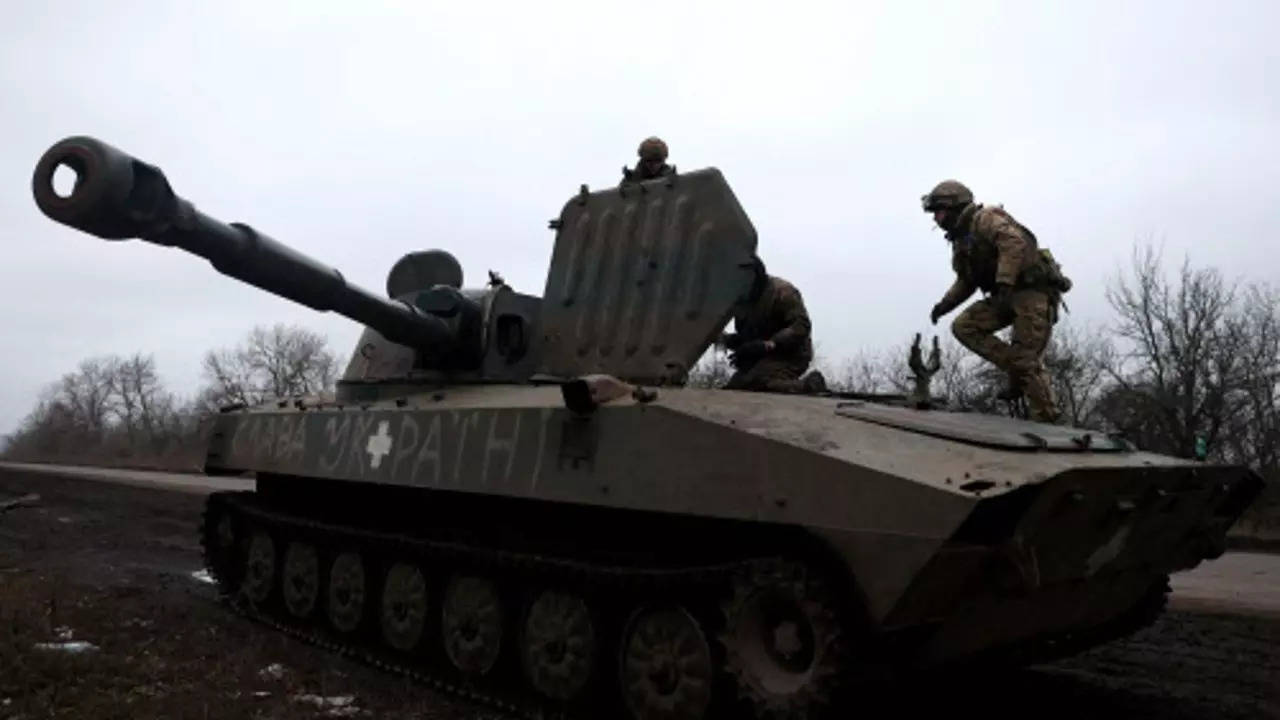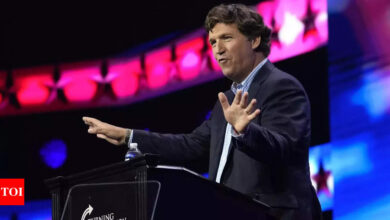World
Nato is still holding strong on Ukraine; Germany slammed for refusing tanks

[ad_1]
WASHINGTON: The billions of dollars in new arms for Ukraine announced this month — including British tanks, American fighting vehicles, and howitzers from Denmark and Sweden — are testament to Russian President Vladimir Putin’s failure to split the Nato allies after nearly a year of war. But small yet significant fractures are getting too big to hide.
The differences are over strategy for the coming year and the more immediate question of what Ukraine needs in the next few months, as both sides in the war prepare for major offensives in the spring. And although most of those debates take place behind closed doors, Britain’s impatience with the current pace of aid and Germany’s refusal to provide Leopard 2 tanks to Ukraine broke out into public view this week.
Germany faced a strong backlash from allies on Saturday over its refusal to supply Ukraine with its vaunted Leopard tanks to boost its fighting capacity in the nearly year-long war with Russia. On Saturday, several allies echoed Ukrainian President Volodymyr Zelensky in saying that thetanks were essential to Ukraine’s fight with its much larger neighbour. In a joint statement — and a rare public criticism of Europe’s top power — the foreign ministers of the three Baltic states said they “call on Germany to provide Leopard tanks to Ukraine now. ”
“This is needed to stop Russian aggression, help Ukraine and restore peace in Europe quickly. Germany as theleading European power has special responsibility in this regard,” said the statement, tweeted by Latvian foreign minister Edgars Rinkevics.
When the new British foreign secretary, James Cleverly, visited Washington this week, he gathered reporters for lunch and made the case that it is possible for Ukraine to score a “victory” in the war this year if the allies move fast to exploit Russia’s weaknesses. Officials in Poland, the Baltic States and Finland have largely agreed with the British assessment.
American officials pushed back, saying it is critical to pace the aid, and not flood Ukraine with equipment its troops cannot yet operate. And they argue that in a world of limited resources, it would be wise to keep something in reserve for what the Pentagon believes will probably be a drawnout conflict, in which Russia will try to wear Ukraine down with relentless barrages and tactics reminiscent of World War I and World War II. On Friday, at the conclusion of a meeting in Germany of the dozens of nations supplying the war effort, the chair of the Joint Chiefs of Staff, Gen. Mark Milley, repeated the assessment he has offered since the fall. “For this year, it would be very, very difficult to militarily eject the Russian forces,” he said. The best that could be hoped for is pressing Russia into a diplomatic negotiation — the way most wars end — although senior American diplomats say they have low expectations that Putin will enter serious talks.
US secretary of defense Lloyd Austin spent several days trying to persuade the Germans to ship German-built Leopard 2 tanks, or at least allow Poland and other nations that use the tanks to reexport them. But by the time the meeting with scores of allies ended, German defense minister Boris Pistorius reported that no agreement had been reached, although he said they would make a decision “as soon as possible. ”
The differences are over strategy for the coming year and the more immediate question of what Ukraine needs in the next few months, as both sides in the war prepare for major offensives in the spring. And although most of those debates take place behind closed doors, Britain’s impatience with the current pace of aid and Germany’s refusal to provide Leopard 2 tanks to Ukraine broke out into public view this week.
Germany faced a strong backlash from allies on Saturday over its refusal to supply Ukraine with its vaunted Leopard tanks to boost its fighting capacity in the nearly year-long war with Russia. On Saturday, several allies echoed Ukrainian President Volodymyr Zelensky in saying that thetanks were essential to Ukraine’s fight with its much larger neighbour. In a joint statement — and a rare public criticism of Europe’s top power — the foreign ministers of the three Baltic states said they “call on Germany to provide Leopard tanks to Ukraine now. ”
“This is needed to stop Russian aggression, help Ukraine and restore peace in Europe quickly. Germany as theleading European power has special responsibility in this regard,” said the statement, tweeted by Latvian foreign minister Edgars Rinkevics.
When the new British foreign secretary, James Cleverly, visited Washington this week, he gathered reporters for lunch and made the case that it is possible for Ukraine to score a “victory” in the war this year if the allies move fast to exploit Russia’s weaknesses. Officials in Poland, the Baltic States and Finland have largely agreed with the British assessment.
American officials pushed back, saying it is critical to pace the aid, and not flood Ukraine with equipment its troops cannot yet operate. And they argue that in a world of limited resources, it would be wise to keep something in reserve for what the Pentagon believes will probably be a drawnout conflict, in which Russia will try to wear Ukraine down with relentless barrages and tactics reminiscent of World War I and World War II. On Friday, at the conclusion of a meeting in Germany of the dozens of nations supplying the war effort, the chair of the Joint Chiefs of Staff, Gen. Mark Milley, repeated the assessment he has offered since the fall. “For this year, it would be very, very difficult to militarily eject the Russian forces,” he said. The best that could be hoped for is pressing Russia into a diplomatic negotiation — the way most wars end — although senior American diplomats say they have low expectations that Putin will enter serious talks.
US secretary of defense Lloyd Austin spent several days trying to persuade the Germans to ship German-built Leopard 2 tanks, or at least allow Poland and other nations that use the tanks to reexport them. But by the time the meeting with scores of allies ended, German defense minister Boris Pistorius reported that no agreement had been reached, although he said they would make a decision “as soon as possible. ”
#Nato #holding #strong #Ukraine #Germany #slammed #refusing #tanks






